Green-winged Pytilia
Posted: Thu Mar 27, 2014 8:50 am
834. Green-winged Pytilia (formerly known as Melba Finch) Pytilia melba (Gewone Melba)
Order: Passeriformes. Family: Estrildidae
Description
The Green-winged Pytilia has a height of 13 cm. Both sexes have orange-red bills and grey-brown legs and feet.
Adult male: Frons, forecrown and cheeks scarlet; hind crown, lores, remainder of face and nape grey. Mantle, back and rump yellowish olive green; upper tail coverts red. Central rectrices reddish, remainder grey-brown, washed red, especially on outer edges. Upper wing coverts yellowish olive green. Flight feathers grey-brown, edged yellowish olive green. Throat scarlet. Upper breast greenish gold; remainder of underparts barred grey and white, centre of belly and undertail coverts more diffuse and buffy. Bill orange-red, non-br male with ridge dark horn. Eyes reddish orange, red-brown or scarlet; eye ring pale grey, narrow. Legs and feet pinkish to greyish brown.
The grey (not red) ear coverts and olive green (not orange) wings separate it from Orange-winged Pytilia (833.).
The female lacks the red on the head, the entire head being grey, and the throat and breast are white barred with black, olive green wings.
The juvenile's head and throat are olive; it is plain greyish below and has a black bill.
Distribution: It occurs across much of sub-Saharan Africa excluding the lowland forest of the West African coast, from Senegal to southern Sudan and Somalia south to Zambia, Angola, Malawi and southern Africa. Here it is common from Mozambique and northern and eastern South Africa to Zimbabwe, Botswana (excluding the arid Kalahari) and northern Namibia.
Habitat
It generally prefers thickets and rank clumps of grass in dry woodland, especially with Acacia trees, while in more arid areas it favours edges of drainage lines and riverine woodland, since it is dependent on surface water being available.
Diet
It feeds mainly on seeds and insects especially termites. It forages in low bushy vegetation and in clearings on the ground.
Breeding
Green-winged Pytilias are monogamous and build a nest that is an untidy ball of dry grass with a side entrance, and is generally located in a thorny bush just one to two metres above the ground. Egg-laying season is year-round, peaking from January-May. It lays 2-5, rarely 6 white eggs, which are incubated by both sexes for about 12-14 days. The chicks are brooded and fed by both parents, leaving the nest after about 18-21 days.
The nest may be parasitized by the Long-tailed Paradise Whydah.
Call
2-3 water droplet sounds followed by trill prrreeeeeoooo. Listen to Bird Call.
Status
Common resident.
Order: Passeriformes. Family: Estrildidae
Description
The Green-winged Pytilia has a height of 13 cm. Both sexes have orange-red bills and grey-brown legs and feet.
Adult male: Frons, forecrown and cheeks scarlet; hind crown, lores, remainder of face and nape grey. Mantle, back and rump yellowish olive green; upper tail coverts red. Central rectrices reddish, remainder grey-brown, washed red, especially on outer edges. Upper wing coverts yellowish olive green. Flight feathers grey-brown, edged yellowish olive green. Throat scarlet. Upper breast greenish gold; remainder of underparts barred grey and white, centre of belly and undertail coverts more diffuse and buffy. Bill orange-red, non-br male with ridge dark horn. Eyes reddish orange, red-brown or scarlet; eye ring pale grey, narrow. Legs and feet pinkish to greyish brown.
The grey (not red) ear coverts and olive green (not orange) wings separate it from Orange-winged Pytilia (833.).
The female lacks the red on the head, the entire head being grey, and the throat and breast are white barred with black, olive green wings.
The juvenile's head and throat are olive; it is plain greyish below and has a black bill.
Distribution: It occurs across much of sub-Saharan Africa excluding the lowland forest of the West African coast, from Senegal to southern Sudan and Somalia south to Zambia, Angola, Malawi and southern Africa. Here it is common from Mozambique and northern and eastern South Africa to Zimbabwe, Botswana (excluding the arid Kalahari) and northern Namibia.
Habitat
It generally prefers thickets and rank clumps of grass in dry woodland, especially with Acacia trees, while in more arid areas it favours edges of drainage lines and riverine woodland, since it is dependent on surface water being available.
Diet
It feeds mainly on seeds and insects especially termites. It forages in low bushy vegetation and in clearings on the ground.
Breeding
Green-winged Pytilias are monogamous and build a nest that is an untidy ball of dry grass with a side entrance, and is generally located in a thorny bush just one to two metres above the ground. Egg-laying season is year-round, peaking from January-May. It lays 2-5, rarely 6 white eggs, which are incubated by both sexes for about 12-14 days. The chicks are brooded and fed by both parents, leaving the nest after about 18-21 days.
The nest may be parasitized by the Long-tailed Paradise Whydah.
Call
2-3 water droplet sounds followed by trill prrreeeeeoooo. Listen to Bird Call.
Status
Common resident.
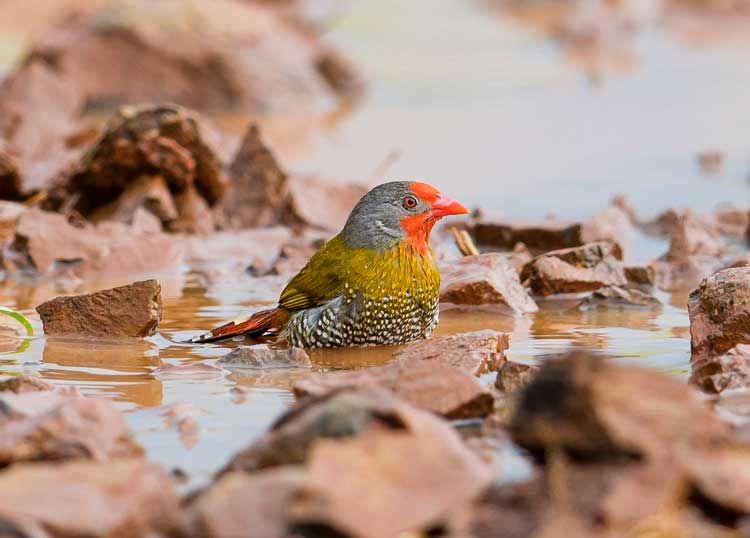 © Pumbaa
© Pumbaa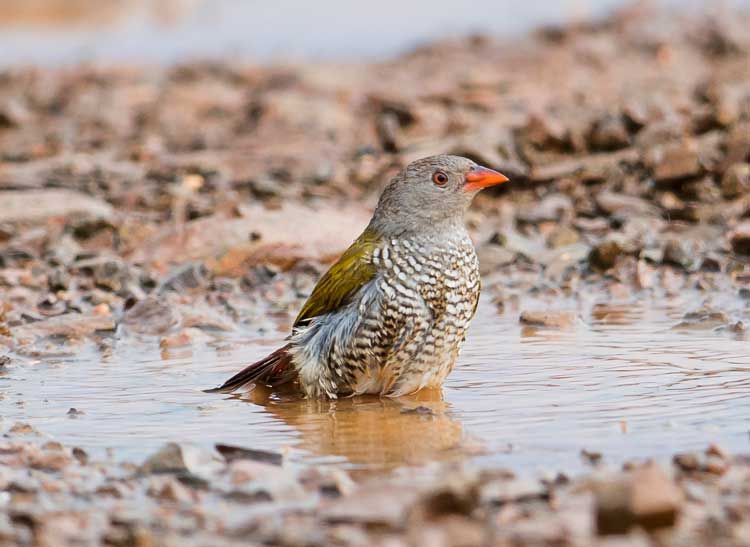 © Pumbaa
© Pumbaa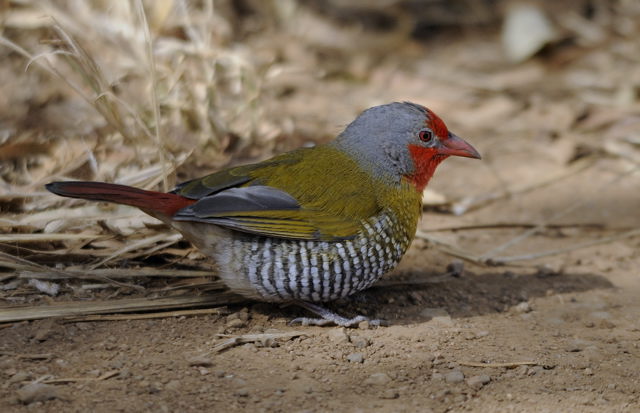 © Dewi
© Dewi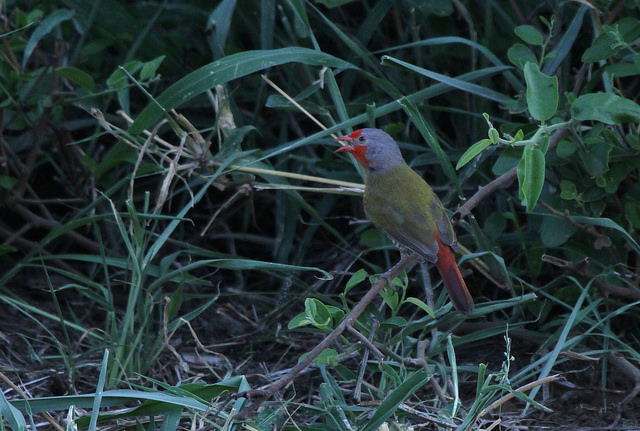 © flying cheetah
© flying cheetah © ExFmem
© ExFmem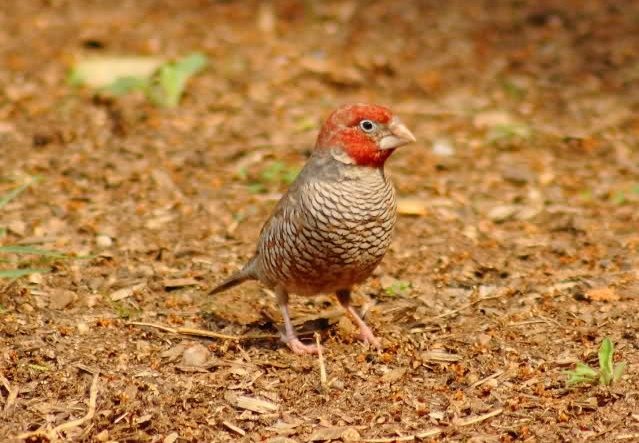 © Flutterby
© Flutterby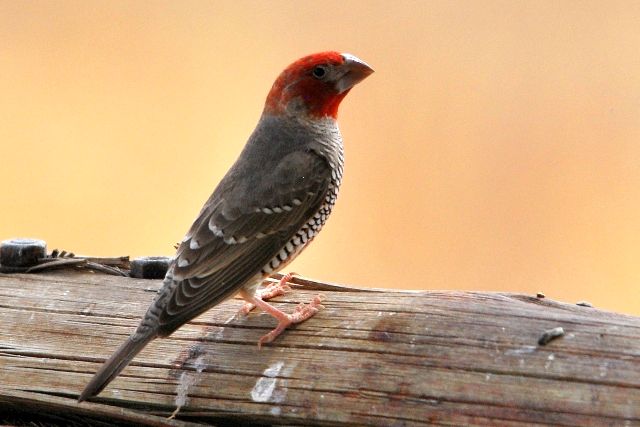 © Mel
© Mel © Amoli
© Amoli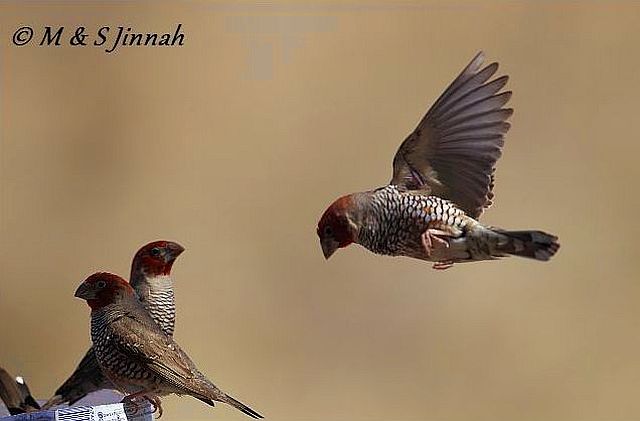 © Sharifa & Duke
© Sharifa & Duke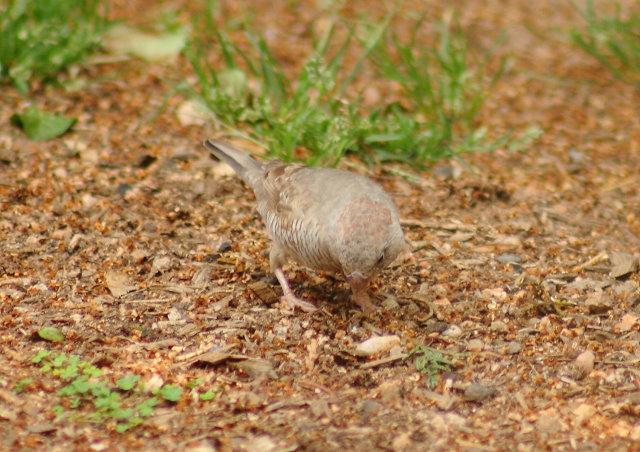 © Flutterby
© Flutterby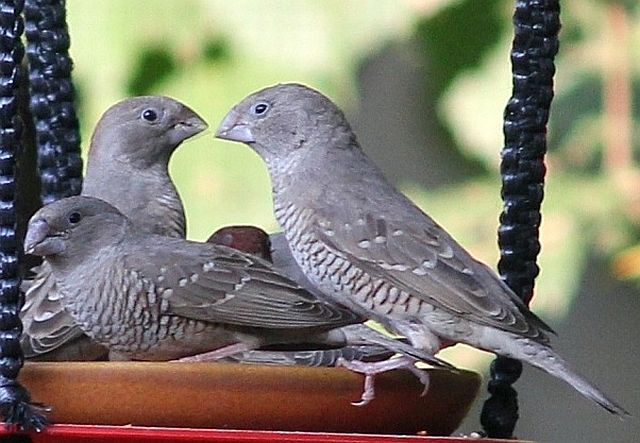 © Amoli
© Amoli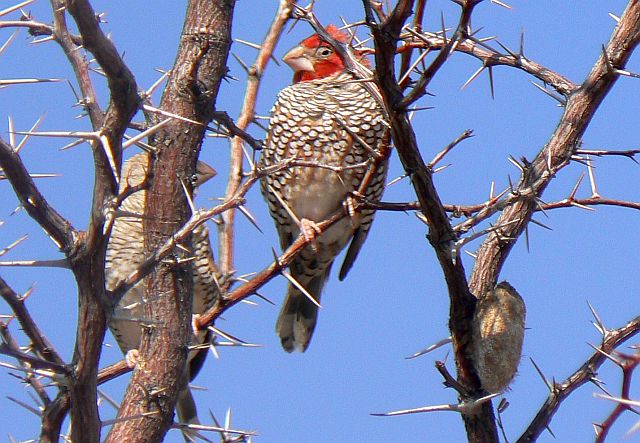 © Toko
© Toko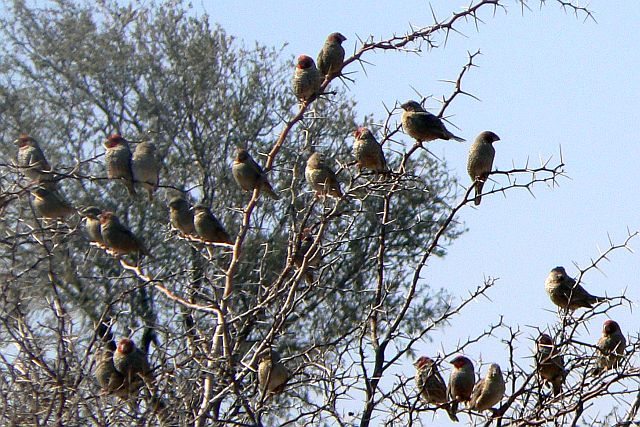 © Toko
© Toko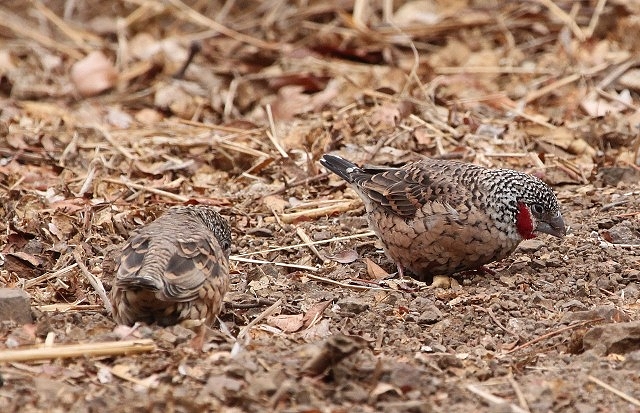 © nan
© nan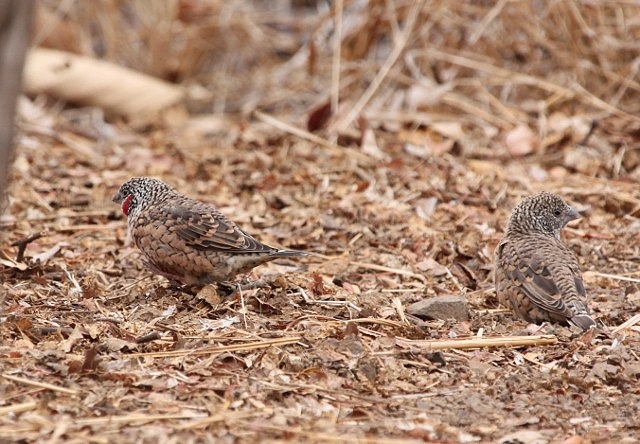 © nan
© nan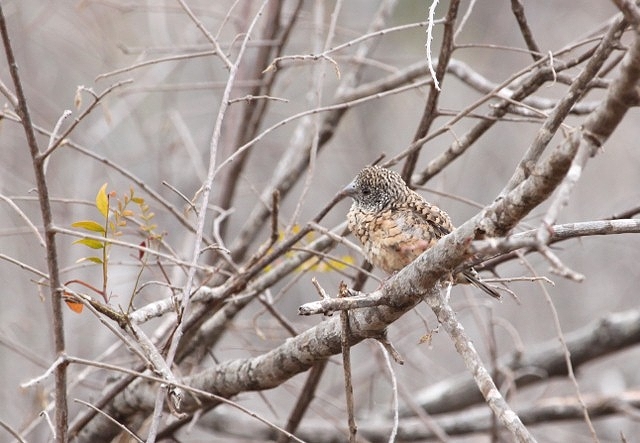 © nan
© nan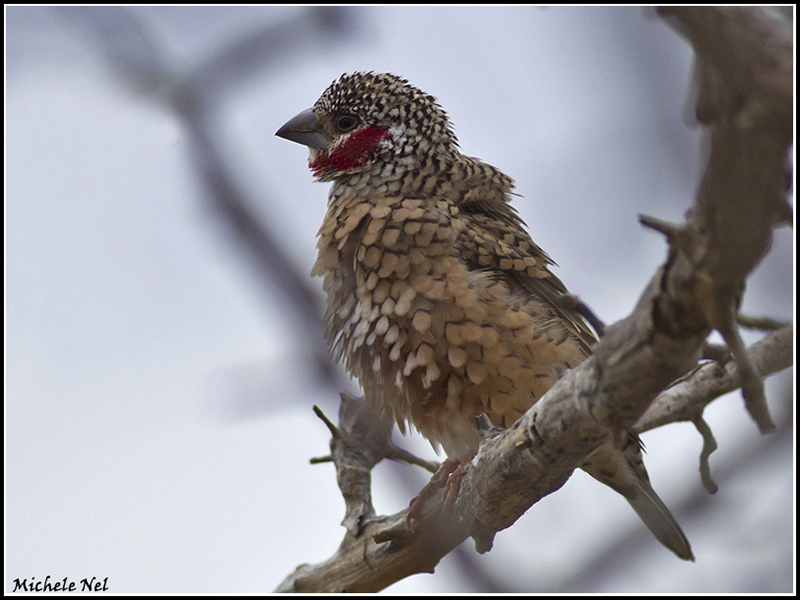 © Michele Nel
© Michele Nel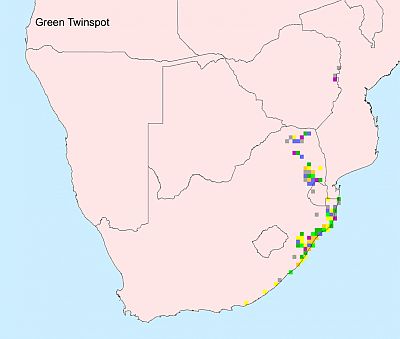
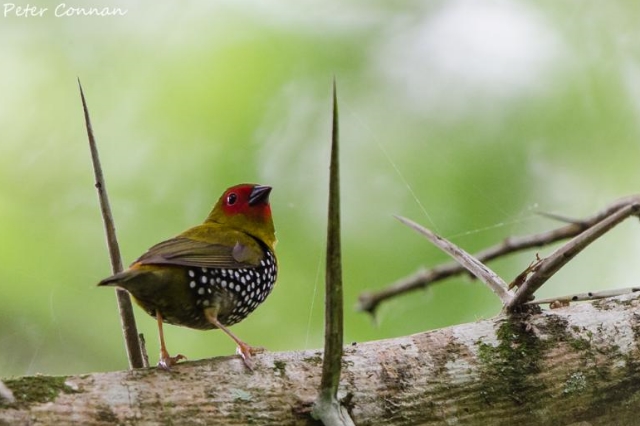 © Peter Connan
© Peter Connan